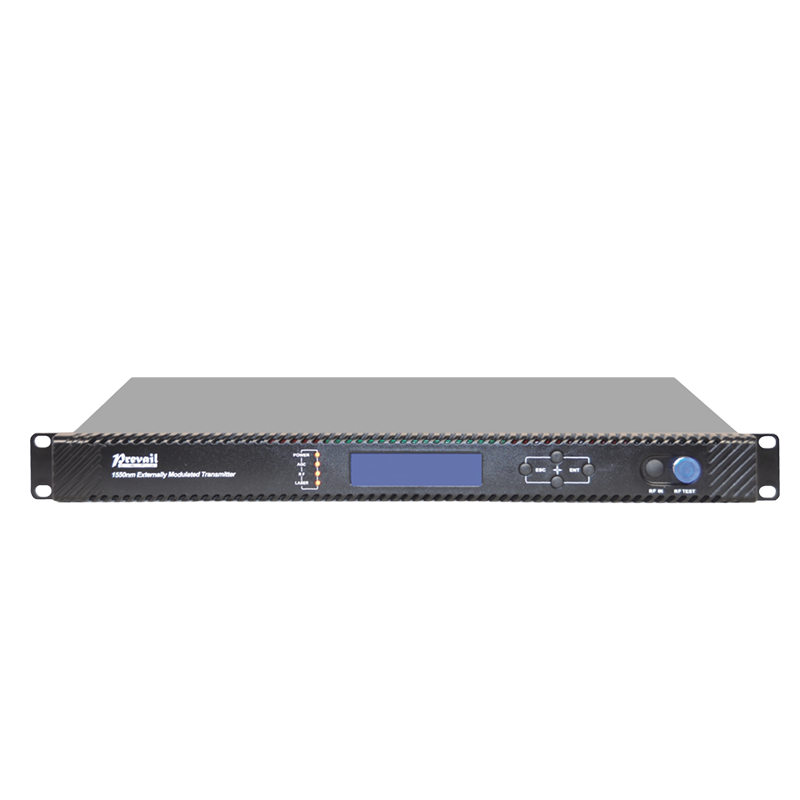Is the 1550nm Optical Transmitter the Backbone of Modern Fiber Optic Communication?
In the rapidly advancing world of telecommunications, the 1550nm optical transmitter has emerged as a cornerstone technology for high-speed data transmission. Operating at the 1550nm wavelength—a sweet spot in the optical spectrum—this device offers unparalleled efficiency and performance in fiber optic networks. But does the 1550nm optical transmitter truly deserve recognition as the backbone of modern communication systems? Let’s explore its defining characteristics and applications to answer this question.

Superior Performance in Long-Distance Transmission
One of the most significant advantages of the 1550nm optical transmitter is its exceptional performance in long-distance data transmission. The 1550nm wavelength lies within the low-loss window of optical fibers, where attenuation (signal loss) is minimized. This makes it ideal for transmitting data over vast distances without requiring frequent signal amplification or regeneration.
For instance, in undersea fiber optic cables that span thousands of kilometers, 1550nm transmitters play a critical role in ensuring reliable communication between continents. Their ability to maintain signal integrity over such long distances reduces the need for costly repeaters, lowering infrastructure expenses while improving network reliability. Similarly, in terrestrial networks, these transmitters enable seamless connectivity across cities and regions, supporting everything from internet services to cloud computing.
Another key feature of 1550nm transmitters is their compatibility with erbium-doped fiber amplifiers (EDFAs). EDFAs are specifically designed to amplify signals at the 1550nm wavelength, further enhancing the reach and capacity of fiber optic systems. This synergy allows networks to achieve higher data rates and greater scalability, making them indispensable for meeting the ever-growing demand for bandwidth.
Moreover, advancements in modulation techniques have pushed the capabilities of 1550nm optical transmitters even further. Technologies like Dense Wavelength Division Multiplexing (DWDM) allow multiple signals to be transmitted simultaneously over a single fiber at slightly different wavelengths around 1550nm. This dramatically increases the capacity of fiber optic networks, enabling them to handle massive amounts of data traffic efficiently.
Energy Efficiency and Cost-Effectiveness
Beyond its technical prowess, the 1550nm optical transmitter stands out for its energy efficiency and cost-effectiveness. Compared to other wavelengths, the 1550nm range requires less power to transmit data over long distances due to its lower attenuation properties. This translates into reduced energy consumption, which is particularly important for large-scale telecommunications networks that operate continuously.
The cost-effectiveness of 1550nm transmitters is another compelling factor. By minimizing the need for signal boosters and repeaters, these devices help reduce both capital and operational expenses. Additionally, their compatibility with existing fiber optic infrastructure ensures that network operators can upgrade their systems without replacing entire installations, saving time and resources.
Furthermore, the reliability of 1550nm optical transmitters contributes to their economic appeal. Designed to withstand harsh environmental conditions, they ensure consistent performance in diverse settings, from urban data centers to remote undersea installations. This durability minimizes maintenance costs and downtime, providing a strong return on investment for telecommunications providers.
Addressing Challenges and Future Innovations
Despite their many advantages, 1550nm optical transmitters face certain challenges. For example, nonlinear effects such as four-wave mixing and self-phase modulation can degrade signal quality in high-power or dense-wavelength systems. However, ongoing research is addressing these issues through innovations in fiber design and signal processing algorithms.
Looking ahead, the integration of quantum technologies and artificial intelligence promises to revolutionize 1550nm optical transmitters. Quantum key distribution (QKD), which operates at similar wavelengths, could enhance the security of fiber optic communications. Meanwhile, AI-driven optimization tools will enable real-time adjustments to transmitter parameters, maximizing efficiency and minimizing errors.
The 1550nm optical transmitter represents a remarkable fusion of performance, efficiency, and scalability, making it a vital component of modern fiber optic communication systems. Its ability to deliver high-speed, long-distance data transmission while reducing costs and energy consumption underscores its importance in today’s interconnected world. So, is the 1550nm optical transmitter the backbone of modern fiber optic communication? With its proven track record and ongoing innovations, it undoubtedly earns that distinction.

















